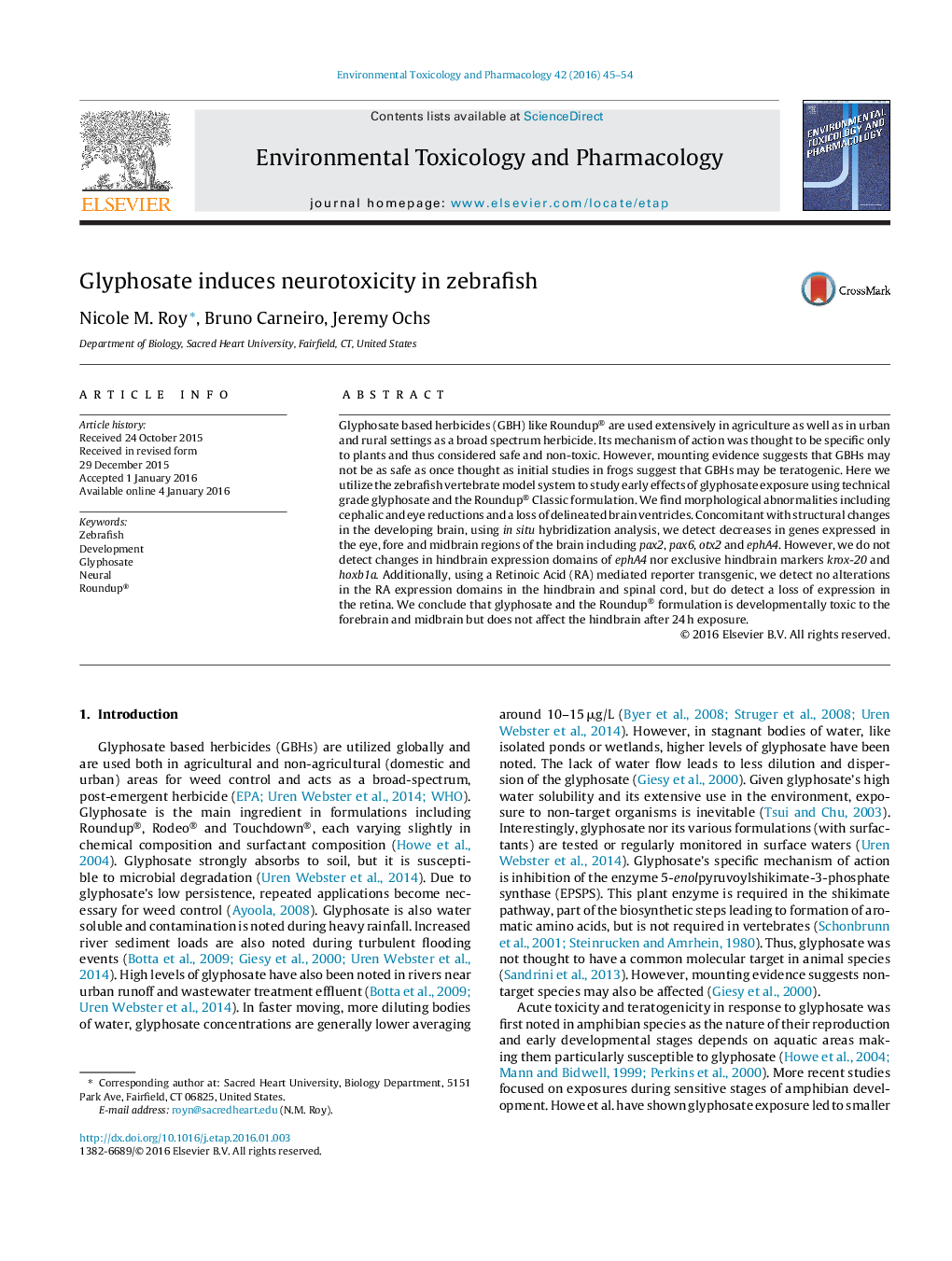| Article ID | Journal | Published Year | Pages | File Type |
|---|---|---|---|---|
| 5848672 | Environmental Toxicology and Pharmacology | 2016 | 10 Pages |
â¢Glyphosate induces loss of delineated brain ventricles and cephalic regions in zebrafish embryos.â¢Glyphosate decreases gene expression in the eye, fore and midbrain regions.â¢Glyphosate does not induce changes in the hindbrain.
Glyphosate based herbicides (GBH) like Roundup® are used extensively in agriculture as well as in urban and rural settings as a broad spectrum herbicide. Its mechanism of action was thought to be specific only to plants and thus considered safe and non-toxic. However, mounting evidence suggests that GBHs may not be as safe as once thought as initial studies in frogs suggest that GBHs may be teratogenic. Here we utilize the zebrafish vertebrate model system to study early effects of glyphosate exposure using technical grade glyphosate and the Roundup® Classic formulation. We find morphological abnormalities including cephalic and eye reductions and a loss of delineated brain ventricles. Concomitant with structural changes in the developing brain, using in situ hybridization analysis, we detect decreases in genes expressed in the eye, fore and midbrain regions of the brain including pax2, pax6, otx2 and ephA4. However, we do not detect changes in hindbrain expression domains of ephA4 nor exclusive hindbrain markers krox-20 and hoxb1a. Additionally, using a Retinoic Acid (RA) mediated reporter transgenic, we detect no alterations in the RA expression domains in the hindbrain and spinal cord, but do detect a loss of expression in the retina. We conclude that glyphosate and the Roundup® formulation is developmentally toxic to the forebrain and midbrain but does not affect the hindbrain after 24Â h exposure.
